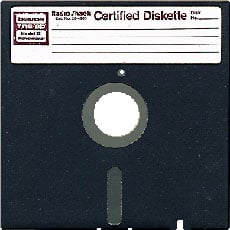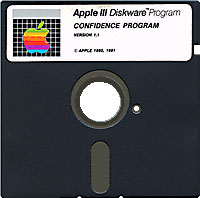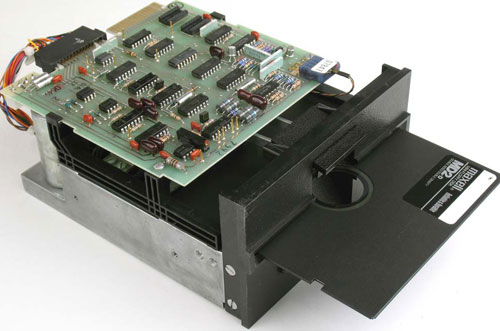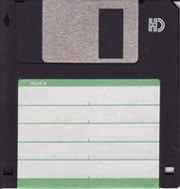Most people know that the floppy disk was developed in 1967 by a team led by Alan Shugart at IBM. However, you can also give its ideation and invention credit to Yoshiro Nakamatsu, a Japanese inventor.
Floppy disks have been a crucial storage source at a time when there were no other options. The ideal storage version was 3.5 inches which stored about 1.44 MB. Today one camera picture might exceed this storage amount. However, in earlier times, this was the maximum storage option.
This article provide will you with information about the history of floppy disks. Read on to learn about the history and important facts about floppy disks.
5 Facts About Floppy Disk
The floppy disk was one of the greatest inventions for data storage during the 1960s. Below are some fun facts about this data storage device.
- Multiple floppy disks were required to install one single program. It was easy to store everyday files on one disk. However, when the size of programs started increasing, it became an unfeasible option.
- The digital cameras used in the 90s had floppy disks as their storage option. The last model to use this storage option was the Sony FD Mavica FD200 in 2002.
- Floppy disks had an anti-wrote lock that prevented viruses from infecting the storage device. Users would have to eject the disk, unlock it, and insert it into the computer to enable the reader option.
- Companies created cleaning kits to ensure the longevity of the floppy disks. This prevented the magnetic disk from dropping fragments in the drive and made the player unusable.
- Computer viruses are very common now and have different sources. However, floppy disks were the first source of computer virus transmission. A malware called Elk Cloner was developed by 15-year old Rich Skrenta in 1982.
Floppy Disk History
Yoshiro Nakamatsu, also known as Dr. NakaMats, was the brain behind several notable inventions. He was born on 26th June 1928 and was labeled as an eccentric inventor. He claimed to hold the world record for several inventions. Those inventions include the floppy disk, armchair Cerebrax, the taxicab meter, the digital watch, etc.
The US Science Academic Society voted Dr. NakaMats as one of the five greatest scientists in history. This category also included Michael Faraday, Nikola Tesla, Marie Curie, and Archimedes.
The claims made by Yoshiro Nakamatsu might have been true since he licensed about a dozen of his patents in the 1970s. Each of these patents was related to floppy disk technology.
According to Nakamatsu, the technology was invented by him during his student years at the University of Tokyo. However, several Japanese corporations turned down his request to produce the floppy disk. This led him to grant the sales license to IBM.

Floppy Disk: How It Worked
To know how a floppy disk works, you will have to know the different parts of the disk drive. If you have ever used a cassette tape, you will find a lot of similarities between the two.
The following parts are present in a floppy disk –
Read/Write Heads: The heads are present on both sides of the disk but not directly opposite each other. One of the heads is used for reading and writing, while the other is used to erode data before writing a new one.
Drive Motor: A tiny spindle motor is present in the center of the disk. This keeps the metal hub engaged and spins it at 300 or 360 rotations per minute.
Mechanical Frame: A protective window is present on the disk, covering the read/write heads. The mechanical frame is a set of levers that open this window to engage the heads with the dual-sided disk media. On ejection, the window automatically closes and covers the heads.
Stepper Motor: The stepper motor makes precise stepped revolutions that move the read/write head to the right track position. This read/write head is attached to the shaft of the stepper motor.
Circuit Board: The circuit board controls all the electronics responsible for reading and writing the data.
Floppy Disk: Historical Significance
The 1960s saw the need for a small storage option that was also removable. In this journey, IBM engineers developed an inexpensive and simple system for loading microcode into their System/370 mainframes in a process called Initial Control Program Load (ICPL).
Ideally, this process would have been done by using tapes. However, the tapes were bulky, large, and slow. IBM wanted a storage option that was much lighter and faster. They wanted to send it out to the customers compiled with software updates.

This led Alan Shugart, IBM Direct Access Storage Product Manager, to assign David L. Noble to develop this option. Noble experimented with RCA 45-rpm records, a magnetic disk with grooves, tape cartridges, dictating belts. However, he finally invented his floppy disk, which was called a memory disk.
IBM introduced the read-only disk in 1971, which held 80 kilobytes. This disk was named Minnow and was shipped as the 23FD, a standard part of System 37 processing units and other products.
IBM applied for a patent in 1970 and was granted the US patent Nr. 3678481 in 1973. The name was changed from Minnow to Igar in 1970, with certain improvements made by Noble and the team.
Since the creation of the floppy disk by IBM, there have been several improvements and changes. Alan Shugart developed Memorex 650, the first read/write FDD, in 1972. This was when Shugart left IMB and joined Memorex.

Shugart further established his own company, Shugart Associates. The company produced the biggest floppy disk, an 8 inches floppy disk that held 800k. However, the size was said to be too big for personal computers. This led to the development of the 5.25 inches FDD in December 1976.


Since then, companies like IBM, Sony, Hitachi, Canon, etc., came up with their version of the floppy disks. Sony’s 3.5 inches floppy drive became one of the most popular sizes and was used for several years. However, the emergence of CD drives drove floppy disks out of the market and saw its end.